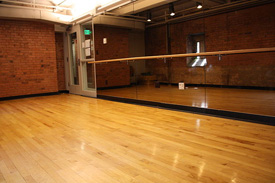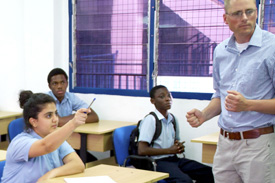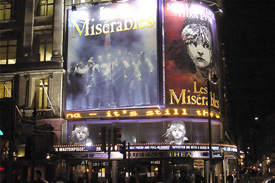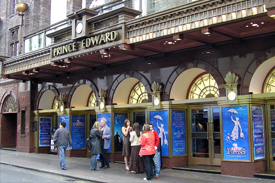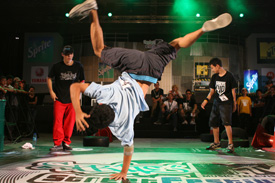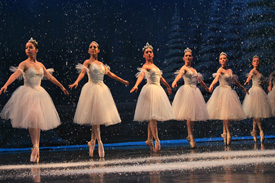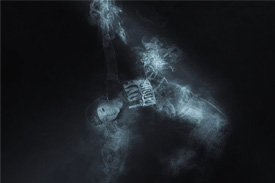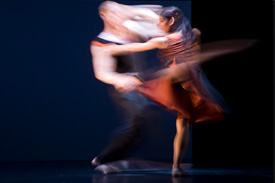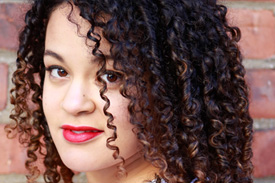 Ianthe is a professional dancer from Bedford, England. She began to dance from the age of three, and at five she was performing all over the UK. She later trained in Latin American dance, where she received the creative dance award for her choreography. When Ianthe was 12 she joined Bedfordshire Youth Dance Company, and was introduced to contemporary dance, working with Henri Oguike.
Ianthe is a professional dancer from Bedford, England. She began to dance from the age of three, and at five she was performing all over the UK. She later trained in Latin American dance, where she received the creative dance award for her choreography. When Ianthe was 12 she joined Bedfordshire Youth Dance Company, and was introduced to contemporary dance, working with Henri Oguike.
Ianthe studied dance at Middlesex University where she received a First Class Bachelor of Arts in Dance Studies. Ianthe was selected to study abroad at Goucher College in Baltimore where she was introduced to African dance and stepping. Ianthe later furthered her training by travelling to New York to train at Broadway Dance Center.
Ianthe has had the priviledge of working on stage, in film and television, such as for a national NBA Playoff campaign. She worked on the opening ceremony for the USA Special Olympics, Good Morning America, the Columbus Day Parade choreography live on ABC, and with Shirlene Quigley, one of Beyonce’s Dancers, on Czech TV. She also performed along the East Coast and Off-Broadway as a member of IndoRican Multicultral Dance Project, Kalamandir Dance Company, Sho Off Dance Company and AATMA.
Ianthe is an accomplished choreographer and teacher, instructing classes in a variety of dance styles to both adults and children, in the UK and USA. New York consequently fuelled Ianthe’s passion to immerse herself in as many dance styles as possible, and inspired her as a performer. She is excited to return to continue to grow as a performer and choreographer.
—
Have always wanted to be on stage?
Pretty much; I was always the first one up dancing in competitions or at parties, and always practicing any and every dance move I learnt in class that day.
Where did you train, and what was it like?
I trained at Middlesex University, Goucher College and Broadway Dance Center. All very different experiences. At Middlesex I mainly focused on contemporary and choreography, but there were two modules that I loved; Dance Culture with Jeanette Bain, and Jazz with Vicki Igbokwe.
At Goucher College, in Baltimore, I was dancing from 9am until 10pm then I would often have midnight step team rehearsal. I focused on Modern, African dance and drumming and Ballet.
Broadway Dance Center, in New York, allowed me to train even more diversely. As a participant in the International Student Visa Programme I had a focus, and was encouraged to take a diverse range of styles as part of my 12 classes per week.
Describe a day in your life now.
Wake up at 6am to teach a dance-based fitness class in the morning, do my own workout whether it be ballet-inspired, high intensity interval training or reformer pilates. Then I will take a dance class or two, or practice choreography from rehearsals that week. Teach street dance or ballet at an after school club then have a rehearsal. Often an Epsom salt bath to end the day!
How important is your diverse training in your work today?
Very important. I have just moved back from New York where I was part of three very different dance companies. I love all aspects of dance so I try to immerse myself in as many styles as possible. I think diversity is important in my strength and conditioning work also. I make sure I mix up my training so that I am not limited in my movement or stamina, and can do whatever the choreography requires of me.
What has been the defining moment of your career?
Touring South Africa with Mystic India the World Tour. I have always wanted to tour internationally with a dance company, so in January I made it one of my goals. In February I auditioned – having never danced Bollywood before – booked it, and had the most intense rehearsal period. I learnt 10 pieces, formations and costume changes in a very short amount of time. It was big challenge but a great experience.
What has been the most challenging?
Just before graduation from Middlesex University I was in a car accident. I couldn’t dance for a year. When getting back into dance I had to retrain myself to do things that used to be second nature, and found that I physically wouldn’t be able to do what I used to, so I had to adapt my focus and training. I found a great physiotherapist that understood the demands on a dancer’s body, so I stayed focused and am now stronger than before.
Where do you hope to be in five years?
In New York performing, creating work and teaching.
What’s the most rewarding thing about the performing arts?
The escapism we give the audience.
What’s the worst thing?
I want to say occasionally, but in actual fact it’s often, people expect you to work for free.
Do you have any pre-show rituals?
I always foam roll and plank.
Who or what inspires you?
Vicki Igbokwe. How she teaches, the energy and confidence she gives her students, the work she creates and produces and her movement vocabulary.
What is your advice to an aspiring dance artist?
Be kind and support each other. There is plenty of work for us all and if there isn’t, create opportunities. Be hungry. Absorb all the information that your teachers, peers and mentors give you and be open to it. In an audition you want to book the job, but find a way to enjoy it and learn from each one. Don’t be afraid to take risks, fight that negative inner voice and always show up.
What’s next for you?
I’m currently training with Boy Blue Entertainment Adult Company so performing and teaching in London.
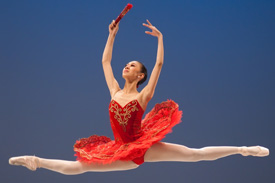 World Ballet Day LIVE was a huge success on 4 October, streaming its longest ever broadcast of a 20-hour worldwide schedule. Kicking off with The Australian Ballet, Facebook LIVE streamed the day for the first time: the longest broadcast ever to be shown on the platform.
World Ballet Day LIVE was a huge success on 4 October, streaming its longest ever broadcast of a 20-hour worldwide schedule. Kicking off with The Australian Ballet, Facebook LIVE streamed the day for the first time: the longest broadcast ever to be shown on the platform. World Ballet Day LIVE was a huge success on 4 October, streaming its longest ever broadcast of a 20-hour worldwide schedule. Kicking off with The Australian Ballet, Facebook LIVE streamed the day for the first time: the longest broadcast ever to be shown on the platform.
World Ballet Day LIVE was a huge success on 4 October, streaming its longest ever broadcast of a 20-hour worldwide schedule. Kicking off with The Australian Ballet, Facebook LIVE streamed the day for the first time: the longest broadcast ever to be shown on the platform.
